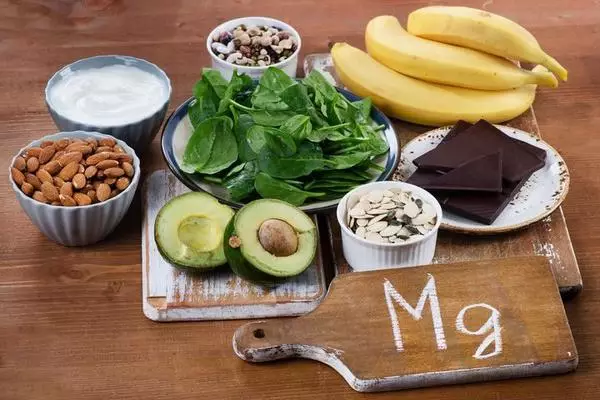 Magnesium is one of the elements with the highest deficiency in bodies. A growing number of people complain about irritability and nervousness, problems with sleeping, chronic fatigue or heart problems. We blame it on stress, whereas the actual cause of such bad state of being can be not having enough magnesium in the body. Magnesium deficiency leads to disorders of the muscle, cardiovascular or nervous systems.
Magnesium is one of the elements with the highest deficiency in bodies. A growing number of people complain about irritability and nervousness, problems with sleeping, chronic fatigue or heart problems. We blame it on stress, whereas the actual cause of such bad state of being can be not having enough magnesium in the body. Magnesium deficiency leads to disorders of the muscle, cardiovascular or nervous systems.
The consequences of long-term magnesium deficiency are development of hypertension, increased risk of heart attack, atherosclerosis, migraines or thyroid conditions. In order to prevent such health conditions, one should get the right amount of magnesium from the diet.
Magnesium is an element that is very common in food products. Many different cereal products contain large amounts of it. Since the staple of our diet is carbohydrates, grains constitute one of the most valuable sources of magnesium.
Cereal products that contain magnesium:
– wheat bran
– buckwheat
– oatmeal
– millet
– brown rice
The magnesium content in this type of products varies from 100 to almost 500 mg per 100 g of weight.
Other products rich in magnesium are nuts – walnuts, pistachio, peanuts, hazelnuts, groundnuts. They provide about 100 – 150 mg of magnesium, and almonds have almost twice as much of it. Lower amounts of magnesium, on the other hand, are in meat – 100 g of turkey contains about 40 mg; a similar magnesium content can be found in fish.
Another thing worth noting is the substantial magnesium content in cocoa and chocolate – there’s a reason why chocolate is considered to be an effective mood enhancer. Such properties are a result of providing large amounts of magnesium to the nervous system.
Magnesium is an element that is also present in vegetables and fruits, although they don’t constitute the main source of magnesium in the diet. Out of vegetables, the highest amount of magnesium is in green vegetable leaves – spinach, parsley leaves, kale, chard, lettuce. Plenty of magnesium can also be found in legume seeds – pea, bean, lentil, soy. The content of this element in legumes is about 100 – 200 mg per 100 g of dry seeds. The fruits with most magnesium, on the other hand, are bananas, avocado, melons, apricots, figs and dried dates.
The magnesium requirement is about 300 mg daily for women and 400 mg for men. It’s not always possible to get such amount from the diet. Now that you know what products contain magnesium, you can compose your diet the right way. Whereas analyzing the amount of magnesium in the consumed food allows to get high doses of magnesium, are they really properly absorbed? The absorption rate for magnesium in the diet is only 40 – 50%. Losing magnesium results from thermal processing of products, taking certain drugs that inhibit absorption of magnesium from the gastrointestinal tract, drinking coffee and consuming alcohol. These factors can contribute to magnesium deficiency. How to prevent it? It’s a good idea to expand the diet with magnesium supplements.
Not only food products can provide easy to absorb magnesium – good quality supplements can do that, too. If they contain organic forms of this element, such as magnesium citrate – they get absorbed perfectly. Such supplements should be free from synthetic additives, as they can have a negative impact on the bioavailability of magnesium. And if the composition of a supplement gets expanded with compounds that have synergistic properties, such as zinc or vitamins B – then we get a great support for muscles, brain and heart. We will also prevent frequent nutrient deficiencies, limit development of many diseases of affluence and take care of perfect well-being and impeccable appearance.
Check one of the best dietary supplements with magnesium – CHEERS ZMB6: magnesium citrate, zinc and vitamin B6.
You must be logged in to post a comment.
Visitor Rating: 5 Stars